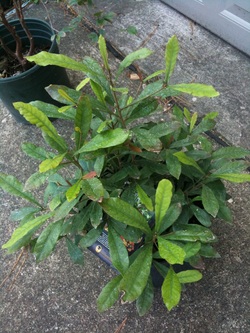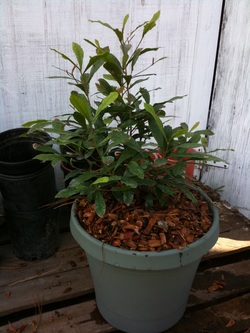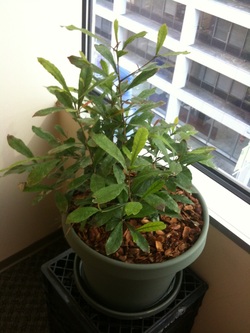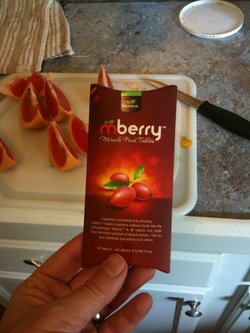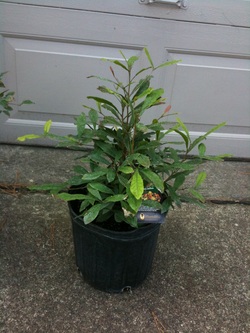
During the 1970's the miracle fruit was considered such a threat to the sugar industry that they allegedly sabotaged attempts to develop the berry as a commercial sugar replacement and pressured the FDA to reject acceptance of miraculin as a food additive and sweetener.
I tried growing a miracle fruit last year after reading about them on John Panzarella's webpage. I planted it in a 10-gallon pot of peat moss and placed it in a nice semi-sunny spot on the covered porch. It was doing fine until the weather started getting cold. I didn't do much to protect it, other than pulling it up closer to the house, and it died. I was also watering it with Houston tap water, which is very alkaline. I have since learned that they like acid soil, and should probably only be irrigated with rainwater or water treated to be acidic.
Now its time for round 2. I went back to JRN Nursery last week, and picked up another one. Some of the leaves had some tip-burn, most likely from being irrigated with tap water, but overall it looked pretty good. Some of the specimens they had for sale were just downright sad though. I brought it home, re-potted it in a 12-inch plastic pot with Scott's potting soil amended with a little bit of powdered sulfur for acidity, and watered it in with rainwater from my rain tank.
I didn't want to build a greenhouse for it, so I brought it up to my office, and placed it by the window where it should get plenty of indirect sunlight. I'll see how it does there. I'm thinking about getting a cheap seed-sprouting heat mat to place under it and keep it a little bit warmer than the ambient office temperature. I'll also have to pollinate it by hand if I want to get any miracle berries, but I'm very interested to see if the plant can be grown this way.
